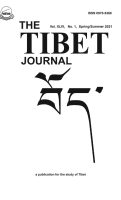 Studley J (on behalf of D. Meir), 2021, The gzhi bdag cult as a regenerative worldview and an animistic expression of biocultural resistance in the Hengduan Mountain Region Tibet Journal Dharamsalla XLVI 1 25-74
Studley J (on behalf of D. Meir), 2021, The gzhi bdag cult as a regenerative worldview and an animistic expression of biocultural resistance in the Hengduan Mountain Region Tibet Journal Dharamsalla XLVI 1 25-74
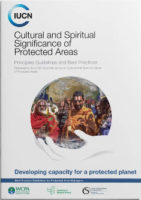 Studley J, 2021, Tibetan Spiritscapes and Spiritual Governance in Southwest China (Case Study 5) Cultural and Spiritual Significance of Nature: Guidance for protected and conserved area governance and management. ed by Bernbaum, E., Mallarach J-M., Verschuuren B. Gland IUCN 74,75
Studley J, 2021, Tibetan Spiritscapes and Spiritual Governance in Southwest China (Case Study 5) Cultural and Spiritual Significance of Nature: Guidance for protected and conserved area governance and management. ed by Bernbaum, E., Mallarach J-M., Verschuuren B. Gland IUCN 74,75
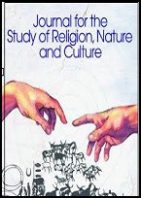 Studley J, 2018, The Ritual Protection of Enspirited Sacred Natural Sites on the Tibetan Plateau and the optimisation of Lay Participation Journal for the Study of Religion Nature and Culture 12 4 354-383
Studley J, 2018, The Ritual Protection of Enspirited Sacred Natural Sites on the Tibetan Plateau and the optimisation of Lay Participation Journal for the Study of Religion Nature and Culture 12 4 354-383
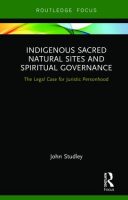 Studley, John, 2018, Indigenous sacred natural sites and spiritual governance: the legal case for juristic personhood Book Routledge
Studley, John, 2018, Indigenous sacred natural sites and spiritual governance: the legal case for juristic personhood Book Routledge
Reviews
I have always thought that sacred sites make an important contribution to species conservation in many places around the world. Here is the carefully prepared evidence that duly describes and respects the beliefs of indigenous peoples.
***
The conservation of biological species and of indigenous cultures belong hand-in-hand. Nowhere is this more apparent that in the many sacred sites described here. They urgently need adequate legal standing so clearly outlined.
***
This is a compelling plea for greater realisation of the important contribution of Sacred Natural Sites to conservation and for better legal protection and understanding of their spiritual nature”
Professor Sir Ghillean Prance FRS, VMH author of That Glorious Forest: Exploring the Plants and Their Indigenous Uses in Amazonia and The Earth Under Threat: A Christian Perspective
_____
“John Studley offers new perspectives on the importance that spirituality has for the conservation of cultural and natural heritage. Recognising spirits of place (other than human persons) as legal entities, legitimises their role in Indigenous cultures who’s worldviews continue to make significant contributions to the conservation of world’s biological and cultural diversity” – Bas Verschuuren, Wageningen University, The Netherlands
_____
“John Studley opens up a novel, and possibly revolutionary, way for Western conservationists to help indigenous people worldwide protect nature. He suggests that many natural systems are inhabited by locally important spirits, and notes that those spirits have, in certain intriguing cases, been granted the attributes of juristic personhood. This concept which accords legal rights to nature spirits suggests that conservationists have a new and potentially powerful tactic to use in the fight against the people and institutions that destroy nature. It’s such a powerful concept that I’ve used it in various fictional scenarios. John proposes out-of-the-box thinking that hopefully will catch on as another way we can use whatever tactics are available to protect the realms where nature and people are under threat”. -) Paul Spencer Sochaczewski, Author of An Inordinate Fondness for Beetles (1996), co-author of Soul of the Tiger (1988), former head of global awareness campaigns for WWF International
_____
“John Studley’s timely book explores how indigenous cultures (particularly Tibetan) protect their mountains, lands and waters by interacting with spiritual guardians and using spiritual governance systems to live in harmony with their Sacred Natural Sites. He outlines how legal systems in South America, New Zealand, India, and the USA are belatedly recognising the value of ancient cultural relationships that indigenous people have with their homelands, and explores recent recognition of legal personhood status being granted to rivers, mountains, Mother nature and the natural world. He calls for international conservation organisations to affirm indigenous traditions by entering into dialogue with indigenous people to implement plural approaches to nature conservation management, and celebrate the diversity that is inherent in our rich cultural landscapes around the planet”. – Peter Horsley, Environmental lawyer and consultant to the Maori
_____
“John Studley’s book boldly takes seriously the ‘animist’ case for legal protection of sacred sites. And after all, if corporations be legal persons, then why not local spirits or deities? The burgeoning movement for the ‘rights of nature’ will want to take this work seriously: both for the potential support it offers and for the subtly but crucially different emphasis that it places, on enspirited sacred natural sites.” – Rupert Read, University of East Anglia, UK
_____
“Many indigenous peoples, for generations, have attributed properties of living beings to non-living objects. Today’s environmental policy has not only started to recognise these animistic beliefs, but also started to apply those to contemporary environmental concerns through concepts such as ‘rights of nature’ or ‘legal personhood’. This ‘animistic turn’ in environmental policy has livened up the discussion on the nature-society relationship. John Studley makes a compelling case for recognising the rights of nature and attributing juristic personhood to places of spiritual significance. His case will prompt the organisations in charge of nature conservation today to seriously consider the spiritual importance of places when setting out principles for protected area management”. – Shonil Bhagwat , The Open University, UK
_____
“John Studley engages the long and unjustly neglected phenomena of the cultural, religious, ecological, and conservation meaning and significance of indigenous natural sacred sites as enspirited landscapes. In particular, he marshals the case for recognizing and promoting their legal status as embracing nonhuman persons in the form of nature spirits. This extraordinarily innovative and insightful approach transcends the artificial and counterproductive limitations of the customary anthropocentric approach to environmental conservation in exclusive terms of their extrinsic or utilitarian values. Studley advances new ways of knowing, being embedded in, and protecting nature through the traditions, understanding, and wisdom of local indigenous communities.” – Leslie E. Sponsel, University of Hawai`i
_____
“John Studley has bestrode the world of sacred places for years and is one reason why we all now take such places seriously as both spiritual and conservation priorities. In his latest book he takes us into the next logical step for protecting such liminal places. Giving them rights which have always been there in traditional cultures and which our ‘rational’ world disregarded at huge social, emotional and ecological cost. This is the next struggle and John is once again our leader.” –Martin Palmer, Secretary General of the Alliance of Religions and Conservation (ARC)
_____
“John Studley’s detailed treatment of sacred natural sites is an important contribution to law in general, and a particularly important one for contemporary international indigenous law. The fact is that various groups of people lay claim to heightened respect for sites and areas they consider to be of an importance that is or approaches “the sacred” and there is currently a soft law appreciation of indigenous sacred sites, places and practices that is hardening into positive law. This piece collects the various arguments well in support of indigenous perspectives.” – James W Zion, Lawyer, representing the Navajo Nations
_____
“John Studley has produced a work of sweeping scope that covers not only recent mile stones in the rapidly growing legal basis for nature rights and protection of indigenous sacred sites, but also the anthropology of beliefs and practices underpinning “spiritual governance” of these sites. Covering examples from numerous indigenous groups and multiple countries on several continents, the book also draws deeply on Studley’s intimate knowledge of the Tibetan and Qiangic people of southwest China and Kham. It will be a valuable introduction to this fascinating and rapidly changing area of legal development of native rights, as well as an invaluable reference for scholars, conservationists and activists interested in indigenous and community conserved areas and effective means of nature conservation other than state-managed protected areas”. – William V. Bleisch, Research/Programs Director of China Exploration and Research Society
_____
“John Studley’s new book challenges us to acknowledge and respect forms of environmental governance rarely considered in the nature conservation sphere – yet critically important to millions of people around the world. His comprehensive enquiry into other-than-human-persons and their relationship to people and place, particularly from his experience in Tibet, is both fascinating and exigent, demanding the reader to bow down to the fact that we humans are not the centre of the universe. Hopefully the conservation community will take this book in all seriousness, recognise the important role of spiritual governance, and act accordingly”. – Liza Zogib, Director, DiversEarth
_____
“A work of great erudition and sensitivity. By drawing attention to the past and present governance of natural areas as part of complex spiritual systems, Studley illuminates an important pathway to conservation’s future.” Harry Jonas, Future Law

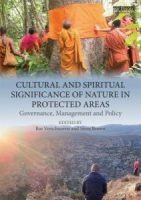 Studley J and Horsley P, 2018, Spiritual Governance as an Indigenous Behavioural Practice Cultural and Spiritual Significance of Nature in Protected Areas: Governance, Management and Policy edited by Verschuuren B and Brown S Abingdon Routledge 72-84
Studley J and Horsley P, 2018, Spiritual Governance as an Indigenous Behavioural Practice Cultural and Spiritual Significance of Nature in Protected Areas: Governance, Management and Policy edited by Verschuuren B and Brown S Abingdon Routledge 72-84 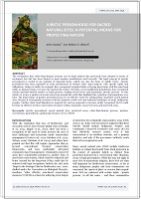 Studley J and Bleisch B, 2018, Juristic Personhood for Sacred Natural Sites: A Potential Means for Protecting Nature The Parks Journal 24 (1) 81-96
Studley J and Bleisch B, 2018, Juristic Personhood for Sacred Natural Sites: A Potential Means for Protecting Nature The Parks Journal 24 (1) 81-96 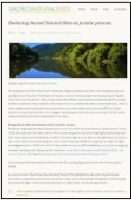 Studley J, 2017, Declaring Sacred Natural Sites as Juristic Persons sacrednaturalsites.org sacrednaturalsites.org
Studley J, 2017, Declaring Sacred Natural Sites as Juristic Persons sacrednaturalsites.org sacrednaturalsites.org 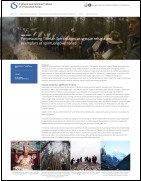 Studley J, 2017, Perpetuating Tibetan Spiritscapes as unique refugia and exemplars of spiritual governance csvpa.org csvpa.org
Studley J, 2017, Perpetuating Tibetan Spiritscapes as unique refugia and exemplars of spiritual governance csvpa.org csvpa.org 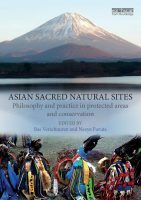 Studley J and Awang J, 2016, Creating New Discursive Terrain for the Custodians of the Tibetan Spiritscapes of North West Yunnan Asian Sacred Natural Sites: Philosophy and Practice in Protected Areas and Conservation ed. by Verschuuren, B. and Furuta, N Abingdon Routledge 271-285
Studley J and Awang J, 2016, Creating New Discursive Terrain for the Custodians of the Tibetan Spiritscapes of North West Yunnan Asian Sacred Natural Sites: Philosophy and Practice in Protected Areas and Conservation ed. by Verschuuren, B. and Furuta, N Abingdon Routledge 271-285 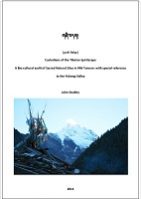 Studley J, 2014, gzhi bdag: custodians of the Tibetan Spiritscape: a bio-cultural audit of Sacred Natural Sites in NW Yunnan (with special reference to the Yubeng Valley) Hong Kong CERS
Studley J, 2014, gzhi bdag: custodians of the Tibetan Spiritscape: a bio-cultural audit of Sacred Natural Sites in NW Yunnan (with special reference to the Yubeng Valley) Hong Kong CERS 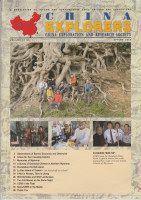 Studley J, 2013, Wild divinities Wild Landscapes China Explorers: China Exploration and Research Society Hong Kong CERS 16 (1) 28-30
Studley J, 2013, Wild divinities Wild Landscapes China Explorers: China Exploration and Research Society Hong Kong CERS 16 (1) 28-30 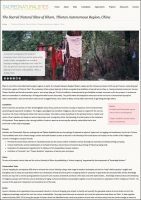 Studley, J, 2013, The Sacred Natural Sites of Kham sacrednaturalsites.org
Studley, J, 2013, The Sacred Natural Sites of Kham sacrednaturalsites.org 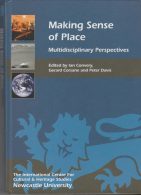 Studley, J, 2012, Territorial Cults as a Paradigm of Place in Tibet Making Sense of Place: Multidisciplinary Perspectives edited by Convery I, Corsane G and Davis P Newcastle/Cumbria University Boydell Press 219-233
Studley, J, 2012, Territorial Cults as a Paradigm of Place in Tibet Making Sense of Place: Multidisciplinary Perspectives edited by Convery I, Corsane G and Davis P Newcastle/Cumbria University Boydell Press 219-233 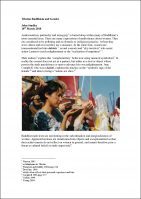 Studley, J, 2010, Tibetan Buddhism and Gender
Studley, J, 2010, Tibetan Buddhism and Gender 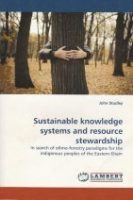 Studley, J, 2010, Sustainable Knowledge Systems and Resource Stewardship: In search of ethno-forestry paradigms for the indigenous peoples of Eastern Kham, Book Saarbrucken, Germany Lambert Academic Publishing
Studley, J, 2010, Sustainable Knowledge Systems and Resource Stewardship: In search of ethno-forestry paradigms for the indigenous peoples of Eastern Kham, Book Saarbrucken, Germany Lambert Academic Publishing 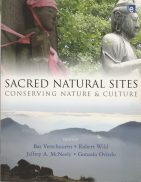 Studley, J, 2010, Uncovering the intangible Values of Earth Care: Using cognition to reveal the eco-spiritual domains and sacred values of the peoples of Eastern Kham Sacred Natural Sites : Conserving Nature and Culture edited by Verschuuren B, Wild R, McNeely JA and Oviedo G London Earthscan 107-118
Studley, J, 2010, Uncovering the intangible Values of Earth Care: Using cognition to reveal the eco-spiritual domains and sacred values of the peoples of Eastern Kham Sacred Natural Sites : Conserving Nature and Culture edited by Verschuuren B, Wild R, McNeely JA and Oviedo G London Earthscan 107-118 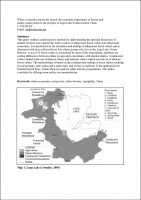 Studley, J, 2010, Where economics meet the sacred: the economic importance of forests and nature conservation to the peoples of Lugu Lake SW China (unpublished)
Studley, J, 2010, Where economics meet the sacred: the economic importance of forests and nature conservation to the peoples of Lugu Lake SW China (unpublished) 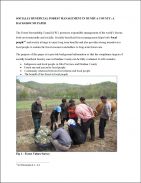 Studley, J, 2009, Socio-cultural Impact of Forest Farms in Dunhua, Jilin Province, China - Paris: BV
Studley, J, 2009, Socio-cultural Impact of Forest Farms in Dunhua, Jilin Province, China - Paris: BV 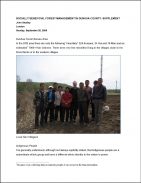 Studley, J, 2009, Socio-cultual Impact assessment of Forest Farms in Dunhua - Supplement Paris BV
Studley, J, 2009, Socio-cultual Impact assessment of Forest Farms in Dunhua - Supplement Paris BV 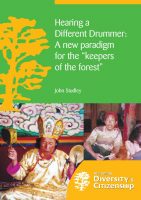 Studley, J, 2007, Hearing a Different Drummer: A new paradigm for the "keepers of the forest" Book London IIED
Studley, J, 2007, Hearing a Different Drummer: A new paradigm for the "keepers of the forest" Book London IIED 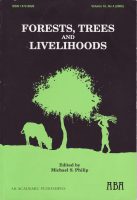 Rowcroft, P; Studley, J; and Ward, K, 2006, Eliciting forest values for community plantations and nature conservation Forests Trees and Livelihoods 16 (4) 329-358
Rowcroft, P; Studley, J; and Ward, K, 2006, Eliciting forest values for community plantations and nature conservation Forests Trees and Livelihoods 16 (4) 329-358 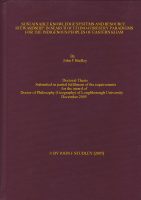 Studley, J, 2006, Sustainable knowledge systems and resource stewardship: In search of ethno-forestry paradigms for the indigenous peoples of Eastern Kham PhD Thesis Loughbourough Loughborough University
Studley, J, 2006, Sustainable knowledge systems and resource stewardship: In search of ethno-forestry paradigms for the indigenous peoples of Eastern Kham PhD Thesis Loughbourough Loughborough University 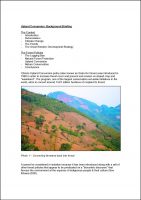 Studley, J, 2004, Upland Conversion - Briefing Document, Kunming: YEDP
Studley, J, 2004, Upland Conversion - Briefing Document, Kunming: YEDP 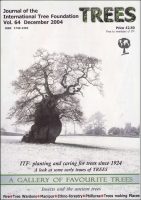 Studley, J, 2004, The challenge of ethno-forestry: The predicament of traditional local forestry practices around Lugu Lake in China, TREES: Journal of the International Tree Foundation 64 (Spring) 16-17
Studley, J, 2004, The challenge of ethno-forestry: The predicament of traditional local forestry practices around Lugu Lake in China, TREES: Journal of the International Tree Foundation 64 (Spring) 16-17 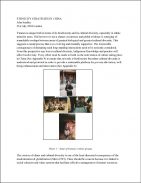 Studley, J, 2004, Ethnicity Strategy in China - Briefing Document YEDP
Studley, J, 2004, Ethnicity Strategy in China - Briefing Document YEDP 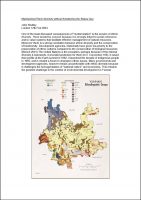 Studley, J, 2004, Maintaining Ethnic diversity without threatening the Status Quo (Unpublished)
Studley, J, 2004, Maintaining Ethnic diversity without threatening the Status Quo (Unpublished) 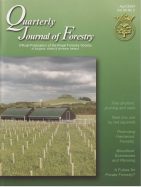 Studley, J, 2004, The dawning of post- modern forestry Quarterly Journal of Forestry 98 (2) 99-100
Studley, J, 2004, The dawning of post- modern forestry Quarterly Journal of Forestry 98 (2) 99-100 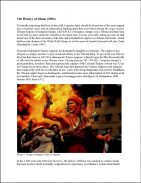 Studley, J, 2004, The History of Kham (PhD support Document)
Studley, J, 2004, The History of Kham (PhD support Document) 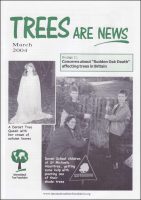 Studley, J, 2004, Reservations about homeopathy Trees are News (ITF) 2004 March 15
Studley, J, 2004, Reservations about homeopathy Trees are News (ITF) 2004 March 15 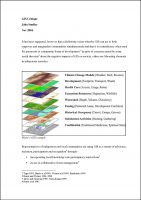 Studley, J, 2004, GIS Critique (PhD support document)
Studley, J, 2004, GIS Critique (PhD support document) 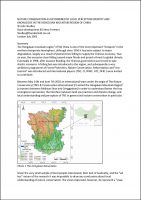 Studley, J, 2002, Nature conservation as determined by local perception, identity and knowledge in the Hengduan mountain region of China TNC
Studley, J, 2002, Nature conservation as determined by local perception, identity and knowledge in the Hengduan mountain region of China TNC